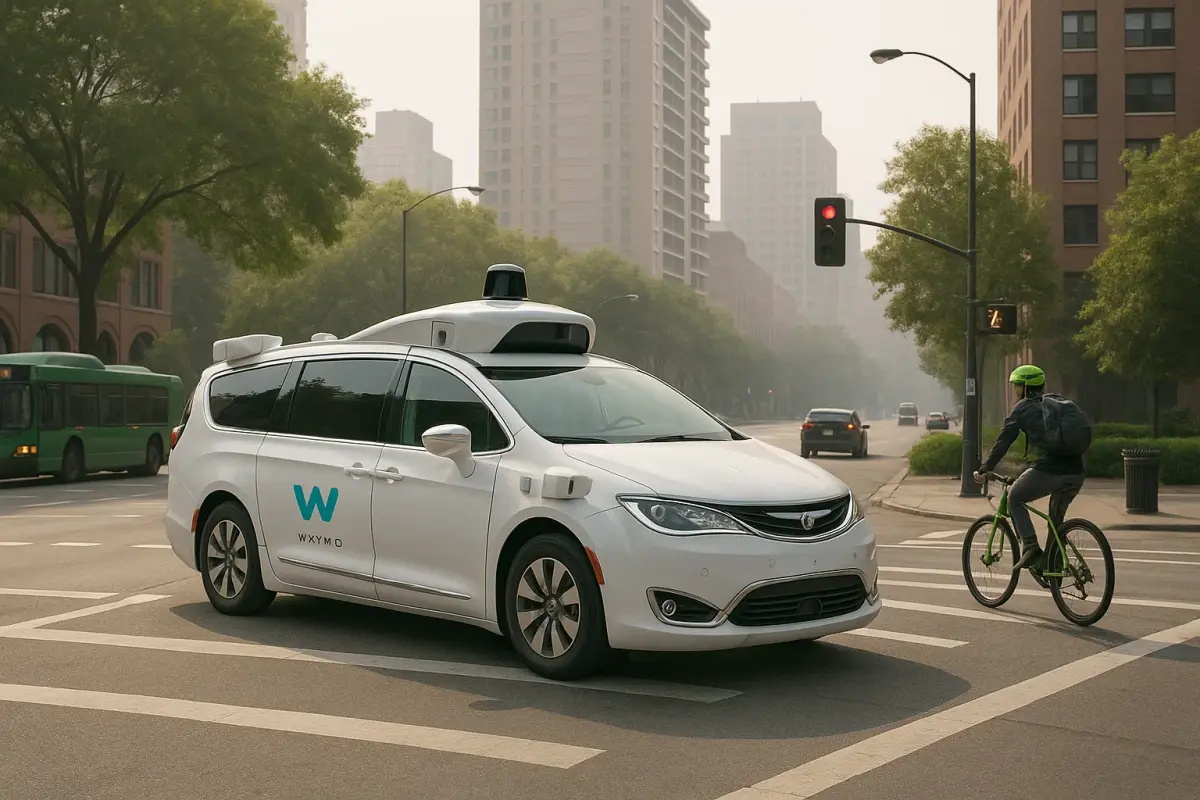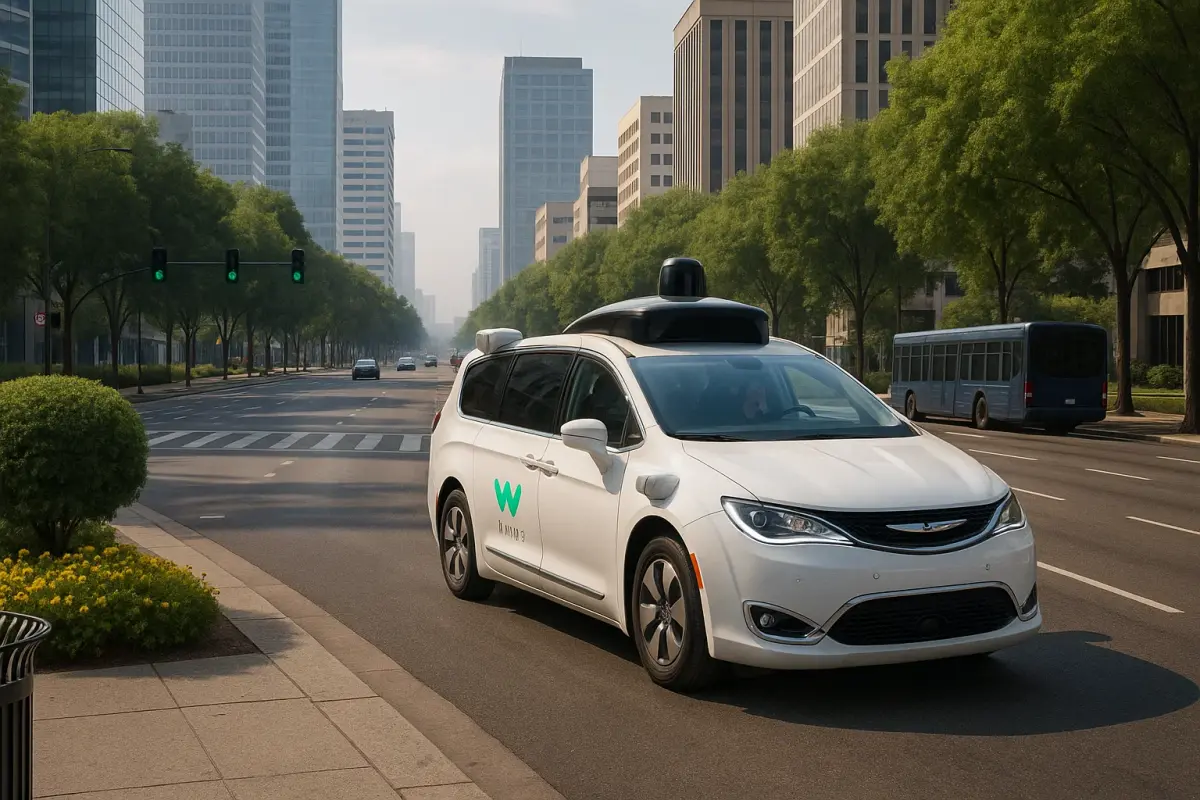
Can Waymo Solve Urban Traffic and Pollution Problems?
Urban facilities round the world are grappling with the dual challenges of visitors congestion and air pollutants. As populations upward thrust and automobile ownership increases, towns face mounting pressure to discover sustainable solutions.
Enter Waymo, the self reliant car (AV) pioneer subsidized by Alphabet (Google’s parent employer), with a project to transform how we flow. But can Waymo truely solve urban traffic and pollution issues? Let’s explore the promise, the capability, and the practical hurdles.
Understanding Waymo: More Than a Self-Driving Car

Waymo isn't just a vehicle organization—it’s a technology-pushed mobility provider. Since its early days because the Google Self-Driving Car Project in 2009, Waymo has focused on developing Level 4 self sustaining automobiles, able to operating without human intervention in certain environments.
Read Also: Why Tesla’s Robotaxi Technology Lags Behind Waymo and Cruise?
Today, Waymo operates a robotaxi carrier in cities like Phoenix and San Francisco, in which select riders can hail a completely self sufficient automobile via the Waymo One app. The motors are electric, powered by means of smooth electricity, and geared up with superior AI to navigate complex city streets.
The Urban Problem: Congestion and Pollution
Traffic Congestion: According to INRIX, a transportation analytics firm, the common American motive force spends over 50 hours in line with year caught in visitors. Congestion wastes time, reduces productivity, and will increase pressure degrees.
Pollution: Urban traffic is a major supply of carbon emissions and air pollution, contributing to respiratory ailments and weather change. In truth, transportation is the largest source of greenhouse fuel emissions in the U.S., with passenger cars accounting for the majority of it.
How Waymo Could Help Solve These Problems?

1. Reduced Vehicle Ownership
Autonomous journey-hailing ought to reduce the need for personal car possession. Instead of each family owning a car, people should rely on shared AVs like Waymo to get around. Fewer vehicles on the street manner less congestion and parking call for.
2. Optimized Traffic Flow
Waymo’s AI-pushed automobiles are designed to force correctly and predictably. They don’t speed, tailgate, or weave via visitors. When a metropolis’s site visitors includes extra AVs, basic driving behavior improves, potentially easing gridlock.
Related Post: How Many Waymo Cars Are in San Francisco?
Plus, with actual-time information, Waymo cars can reroute to avoid congested areas, coordinate with visitors systems, and clean out height journey instances.
3. Reduced Emissions Through Electrification
Waymo exclusively makes use of electric powered motors in its robotaxi fleets. As the fleet expands and cities undertake extra AVs, the shift from fuel-powered motors to EVs can assist diminish urban emissions dramatically.
4. Carpooling and Shared Mobility
Waymo can facilitate shared rides, particularly at some stage in rush hours. Pooling passengers heading within the same course reduces the quantity of trips—and emissions—in line with man or woman.
5. Less Need for Parking Infrastructure
Since AVs can be in close to-constant use, towns may want to reduce the land allotted to parking masses and garages. That area can be repurposed for inexperienced spaces, bike lanes, or housing, similarly improving urban livability.
Real-World Impact: Where Waymo Is Making a Difference
Phoenix, Arizona
Waymo released the primary commercial AV experience-hailing carrier in Phoenix in 2020. Early facts indicates that the service is reliable, safe, and consumer-pleasant. Riders appreciate the benefit, and because the motors are electric powered, there’s a right away reduction in emissions in comparison to traditional taxis or rideshares.
San Francisco
While greater complex due to steep hills, tight streets, and erratic human drivers, San Francisco serves as a proving floor for a way Waymo can integrate into dense, dynamic urban environments.
Challenges and Limitations
While the ability is massive, several hurdles continue to be:
1. Scaling Up: Waymo’s modern-day reach is constrained. To make a dent in city visitors and pollutants, autonomous fleets want to scale throughout dozens of towns and serve millions of riders.
2. Regulatory Hurdles: Autonomous automobiles face strict guidelines and want non-stop safety validation. Each metropolis and nation might also have specific rules, slowing growth.
3. Public Perception and Trust: Not everybody is prepared to leap into a driverless automobile. Building public believe in AV protection and reliability is a slow manner.
4. Mixed Traffic Conditions: AVs should percentage the road with human drivers, cyclists, and pedestrians. This hybrid site visitors surroundings can create unpredictable demanding situations and restriction the efficiency benefits of AVs.
5. Energy Source of Electricity: While EVs lessen tailpipe emissions, the environmental advantage relies upon at the supply of electricity. In areas nevertheless reliant on coal or herbal gasoline, the internet emission reductions may be less vast.
The Bigger Picture: Waymo as a Catalyst for Smarter Cities
Waymo isn’t a silver bullet—but it is able to be a powerful catalyst. When paired with sustainable city making plans, higher public transportation, and walkable city layout, self reliant EVs can assist reshape how we pass in cities.
Smart infrastructure, like related traffic lighting fixtures, dedicated AV lanes, and multi-modal hubs, can make bigger the impact of organizations like Waymo. The intention isn’t simply fewer cars—it’s better transportation average.
Conclusion: A Promising Path, Not a Perfect Fix
So, can Waymo resolve city visitors and pollutants issues? Not on my own—but it is a critical part of the answer. Waymo offers a glimpse into a purifier, smarter future of transportation.
Its electric powered, self sufficient automobiles have the capability to reduce emissions, ease site visitors congestion, and enhance urban mobility. However, knowing that destiny depends on policy help, infrastructure investment, and public adoption. Cities that include AV era even as making an investment in sustainability stand to advantage the maximum. In that context, Waymo can be a using pressure for trade.


